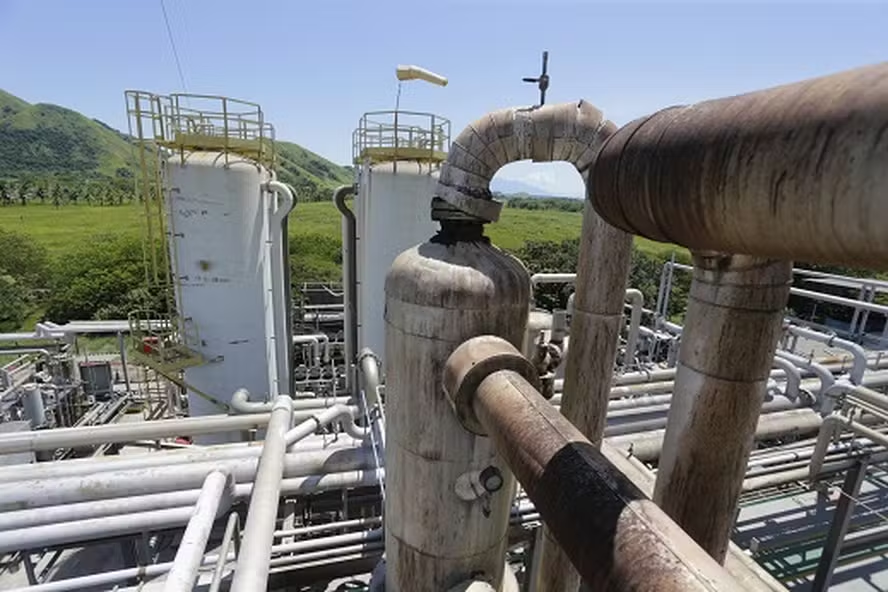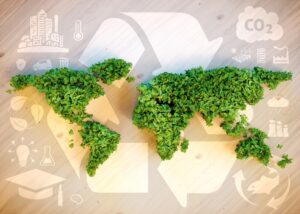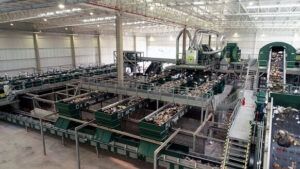
At the Seropédica landfill, biogas is generated from organic waste. With proper treatment, biomethane is produced, which is equivalent to natural gas — Photo: Domingos Peixoto / Agência O Globo
Source: O GLOBO – 03/31/2025
Most plants today are installed in landfills, but the sector foresees progress in using waste from sugar and ethanol production.
Brazil still needs to invest hundreds of billions of reais to universalize sewage treatment, but the proper disposal of solid waste remains a challenge. Around 1,600 cities across the country still have open dumps, showing that eradication goals have not been met. Yet, some see this issue as an opportunity to move forward in the energy transition toward a low-carbon economy.
With proper treatment, landfills can harness the biogas produced by waste decomposition to generate electricity or, more importantly, to produce biomethane — a fuel equivalent to natural gas, suitable for both industrial and vehicular use (NGV), in accordance with standards set by the National Agency of Petroleum, Natural Gas and Biofuels (ANP).
Currently, Brazil produces 840,000 cubic meters of biomethane per day, according to the Brazilian Biogas Association (Abiogás). There are 11 processing plants in the country, most of them located in landfills.
32 awaiting approval
Once another 32 plants, currently awaiting installation authorization from the ANP, begin production, they will add 1.4 million cubic meters per day, according to Abiogás. Projects mapped by the organization point to a production potential of 8 million cubic meters per day by 2030.
According to Abiogás, Brazil’s theoretical biomethane production potential is 120 million cubic meters per day — more than double the current natural gas consumption. In 2024, the average daily consumption was 52.5 million cubic meters, according to the Brazilian Association of Piped Gas Distribution Companies (Abegás).
And although most current plants are in landfills, the greatest potential lies in the agroindustry, particularly in using waste from sugar and ethanol production and livestock manure.
Renata Isfer, executive president of Abiogás, is optimistic about production growth. Long-term demand is being driven by the Future Fuel Law — a set of incentive policies passed in October 2024 that includes national programs for green diesel, sustainable aviation fuel, and biomethane — as well as Petrobras’ first purchasing call and signs that competitive costs could boost the use of gas-powered trucks.
“There’s synergy coming from the fuel distributors themselves, looking at the diesel market. This shift toward gas-powered trucks is important and here to stay,” says Renata.
Sector companies are also optimistic, reinforcing the view that demand for biomethane is heating up. Gás Verde, which owns the largest renewable gas plant in Latin America — located at the Rio Waste Treatment Center landfill in Seropédica — continues its plan to convert ten biogas-fired power plants into biomethane plants, all within landfills.
Currently, the company produces 160,000 cubic meters of biomethane per day across two units. By 2028, when all 12 plants across six states are operational, production is expected to reach 650,000 cubic meters per day, supplying industrial processes and gas-powered fleets.
“The biomethane market is relatively new but is developing at a rapid pace, driven by the growing commitment of companies — especially large corporations — to permanently reduce their greenhouse gas emissions and actively contribute to combating global warming,” says Marcel Jorand, CEO of Gás Verde.
Partnership initiative
The company will also retain half of the production from a joint venture it formed with Orizon VR, comprising two biomethane units located in landfills in São Gonçalo and Nova Iguaçu.
Orizon VR operates landfills — 17 “ecoparks” across 12 states. Biomethane production from gases released by waste decomposition is part of the company’s business model. Orizon VR has a subsidiary, BioE, which will operate the plants — including the two in the joint venture with Gás Verde.
“It was already a demanding market, and then we had, additionally, the Future Fuel initiative, which boosts the sector, bringing in new players like Petrobras and other fuel producers,” says Milton Pilão Jr., president of Orizon VR.
New producers are expected to come from the agroindustry, which has the highest production potential, according to Abiogás. Of the 11 plants currently operating in the country, six are in landfills, but most of the projects mapped through 2028 come from the agroindustry, says Renata.
The boost could come from combining production potential with the opportunity to convert truck fleets to NGV, as seen in the sugar-energy sector.
According to Renata, installing biomethane plants alongside sugar and ethanol factories to use their waste could supply the trucks transporting their production.
This goal underpins the plans of Atvos, a sugar and ethanol producer, which recently announced it had obtained environmental licensing to build a biomethane plant at its production complex in Nova Alvorada do Sul (MS). The plant is expected to start operating in 2026.
Orange-powered gas
This month, French agribusiness giant Louis Dreyfus Company announced the start of construction of a biogas plant to process effluents from orange and lemon juice production at its factory in Bebedouro (SP). According to the company, an “innovative biotechnology” was developed to break down the organic load of citrus effluents, generating biogas. It will be the multinational’s first industrial-scale plant of its kind — a pilot unit in General Lagos, Argentina, already produces biogas from soybean processing waste.
“Our expectation is that this innovative biotechnology, once applied at scale, will significantly contribute to decarbonizing the supply chain and positively influence the country’s citrus industry,” said Louis Dreyfus Company in a statement to O GLOBO.



